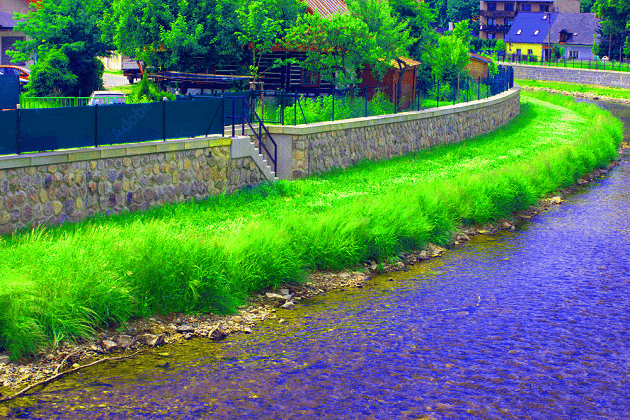A Guide to How to Build a Retaining Wall on a River Bank
A Guide to How to Build a Retaining Wall on a River Bank
Introduction
Retaining walls are essential structures for managing water flow and preventing soil erosion, particularly along riverbanks. Whether you’re a homeowner looking to protect your property or a professional landscaper, understanding how to build a retaining wall on a river bank is a valuable skill. In this guide, we’ll walk you through the steps and considerations involved in constructing a sturdy and effective riverbank retaining wall.
1. Understanding the Importance of River Bank Retaining Walls
Before we delve into the construction process, let’s take a moment to understand why retaining walls are crucial on riverbanks. These walls serve several essential functions:
- Erosion Control: Riverbanks are susceptible to erosion due to the constant movement of water. A well-built retaining wall helps to prevent soil erosion, preserving your property and the environment.
- Stabilization: Retaining walls provide stability by holding back soil and preventing landslides. This is especially vital on riverbanks where the ground can be unstable.
- Aesthetics: While functionality is the primary concern, retaining walls can also enhance the visual appeal of your property by creating defined landscaping areas.
2. Planning Your River Bank Retaining Wall
The success of your project starts with proper planning. Consider these factors:
- Local Regulations: Check with your local authorities to ensure you comply with any regulations regarding riverbank construction.
- Design: Decide on the design, size, and type of retaining wall you want to build. Options include gravity walls, cantilevered walls, and more.
- Materials: Choose suitable materials for your retaining wall. Common options include concrete blocks, natural stone, timber, or interlocking concrete blocks. Your choice should align with your design and budget.
3. Gathering Necessary Tools and Materials
Once you have your design and materials in mind, gather the tools and materials you’ll need. This may include:
- Shovels and spades
- Levels
- String lines
- Concrete or mortar
- Reinforcement materials
- Drainage pipes and gravel
4. Excavation and Foundation
The foundation of your retaining wall is crucial. Follow these steps:
- Mark the Area: Mark the outline of your wall with string lines to guide the excavation.
- Excavation: Dig a trench for the wall’s foundation. Ensure it’s level and wide enough to accommodate the base of your wall blocks or materials.
- Compact the Soil: Compact the soil in the trench to create a solid base.
- Install Drainage: Lay a drainage pipe at the base of the trench, covered with gravel, to manage water runoff and prevent hydrostatic pressure.
5. Building the Retaining Wall
With your foundation prepared, it’s time to construct the retaining wall:
- Start at the Lowest Point: Begin at the lowest point of the riverbank, using the appropriate base material (concrete blocks, stone, or timber).
- Level and Align: Use a level to ensure each course of blocks is level and aligned with the string lines.
- Backfilling: Fill in the space behind the wall with soil, ensuring it’s compacted at regular intervals to prevent voids and settling.
- Add Reinforcement: If necessary, add reinforcement materials like rebar or geogrid for added stability.
6. Finishing Touches
Once your wall is in place, consider these finishing touches:
- Coping: Install coping stones or caps to protect the top of the wall from erosion and enhance its appearance.
- Planting: Add vegetation around the wall to further enhance its stability and aesthetics.
7. Maintenance
To ensure the longevity of your riverbank retaining wall, perform regular maintenance, including checking for erosion, drainage, and any signs of damage or shifting.
Conclusion
Building a retaining wall on a river bank is a practical and aesthetically pleasing way to manage soil erosion and create defined landscaping areas. By understanding the importance of these walls, careful planning, and proper construction, you can enjoy a stable and attractive riverbank for years to come. Remember to check local regulations and seek professional guidance if you’re uncertain about any step in the process. With the right approach, you can successfully construct a riverbank retaining wall that adds both function and beauty to your property.
For more information and inspiration on building retaining walls, visit our website at CheapRetainingWallIdeas.com. We provide valuable resources and ideas to help you get started on your retaining wall project, including tips on using various materials and designs. Don’t miss the chance to create a stable and stunning riverbank with our expert guidance.
Remember, your riverbank retaining wall is an investment in your property’s future, so take your time and do it right. How to build a retaining wall on a river bank is not just a project; it’s a commitment to safeguarding your land and the environment.
